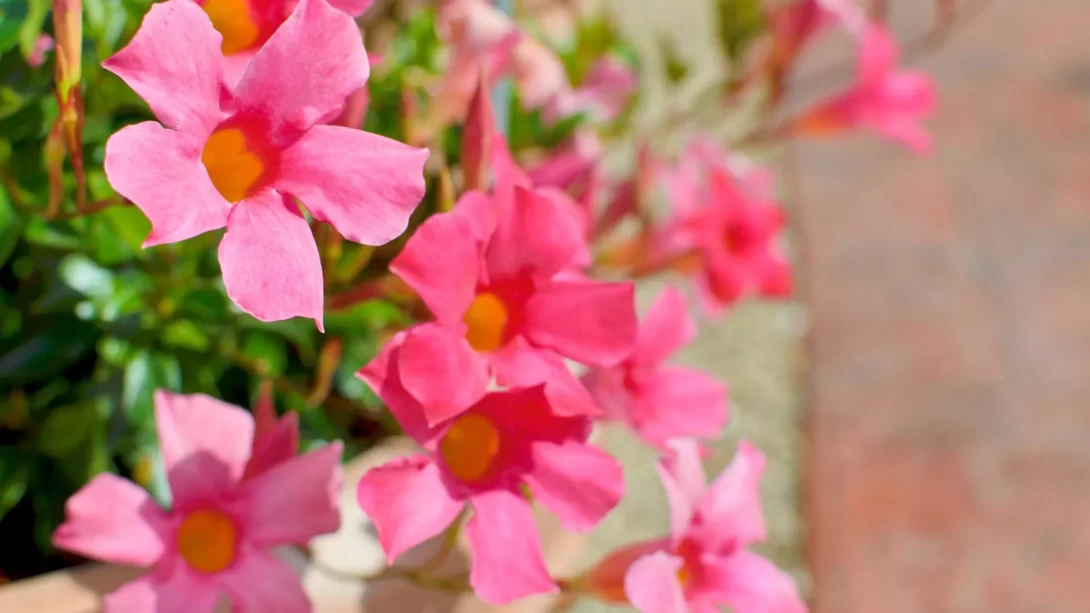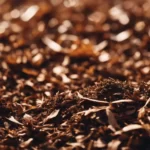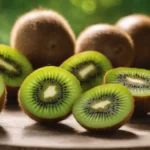Mandevilla, a popular plant in many gardens, is known for its vibrant flowers and climbing growth habit. However, gardeners often face the challenge of protecting their beloved plants from local wildlife, particularly deer. Understanding deer behavior and dietary preferences is crucial for maintaining the health and beauty of Mandevilla in gardens where deer are frequent visitors. This article aims to shed light on the relationship between deer and Mandevilla plants.
Mandevilla
Mandevilla plants are prized for their spectacular trumpet-shaped flowers, which come in shades of pink, red, white, and yellow. These fast-growing, climbing vines are often used to adorn fences, trellises, and pergolas, adding a touch of tropical beauty to landscapes. Beyond their aesthetic appeal, Mandevilla plants are also relatively easy to care for, thriving in warm climates and requiring moderate maintenance. Given their attractive appearance, it’s important for gardeners to consider how these plants interact with local fauna, particularly deer.
Deer Feeding Behavior
Deer are adaptable feeders with a diet that varies depending on their habitat and the seasons. In general, deer prefer tender shoots, leaves, and flowering plants, especially those high in nutrients and moisture. Their feeding habits can have significant impacts on gardens, sometimes leading to the complete stripping of certain plants. Understanding which plants are most susceptible to deer is essential for gardeners looking to protect their foliage and flowers from these animals.
Deer and Mandevilla: Assessing the Attraction
The attraction of deer to Mandevilla plants is not straightforward. While deer have a broad diet, their preference for certain plants over others can depend on various factors, including plant texture, taste, and nutritional value. Mandevilla, with its lush foliage and vibrant flowers, may seem like a potential target. However, its appeal to deer largely depends on the availability of other food sources in the area.
In regions where natural vegetation is abundant, deer may be less likely to feed on Mandevilla. Conversely, in areas where food sources are scarce, particularly in urban or suburban settings, deer may be more inclined to sample a wider range of plants, including ornamental varieties like Mandevilla.
Mandevilla’s Vulnerability to Deer
Comparing Mandevilla to other plants commonly found in gardens, its risk of being eaten by deer is moderate. While not the most preferred choice, Mandevilla can still fall victim to deer, especially young plants with tender leaves and shoots. The plant’s climbing habit doesn’t necessarily deter deer, as they are capable of reaching up to feed on higher foliage.
The specific variety of Mandevilla may also play a role in its attractiveness to deer. Some cultivars might have characteristics that are less appealing to deer, such as a certain leaf texture or a less enticing taste.
Strategies to Protect Mandevilla from Deer
There are several effective strategies to protect Mandevilla plants from deer. The use of physical barriers, like fencing or netting, can provide immediate protection. Fences need to be tall enough to prevent deer from jumping over them, typically around 8 feet in height. Netting can be draped over or around the plants to create a physical barrier that deer cannot penetrate.
Deer repellents are another popular method. These can be either commercially available products or homemade concoctions. Repellents work by emitting odors or tastes that are unpleasant to deer, deterring them from approaching the plants. It’s important to note that the effectiveness of repellents can vary and may need to be reapplied regularly, especially after rain.
Additional Measures for Protecting Mandevilla
In addition to physical barriers and repellents, integrating deer-resistant plants into the garden can provide a natural form of protection for Mandevilla. Companion planting with species that deer find unappealing can create a protective buffer. Plants such as lavender, salvia, and marigolds are known for their deer-resistant properties. These plants emit strong scents or have textures that deer typically avoid, making them less likely to venture close to your Mandevilla.
Another strategy involves strategic garden layout. Planting Mandevilla closer to the house or in areas with high human activity can deter deer, as they tend to avoid close interactions with humans. Using raised beds or elevating the plants can also be helpful, as deer are less likely to reach plants that are off the ground.
Tips for a Deer-Resistant Garden
Creating a deer-resistant garden involves more than just protecting individual plants; it requires a holistic approach to landscaping. Choose a variety of plants known to be unattractive to deer, ensuring that your garden remains vibrant and diverse. Regular maintenance, such as pruning and removing any fallen leaves or flowers, can also reduce the likelihood of attracting deer.
It’s important to note that no method is entirely foolproof. Deer behavior can be unpredictable, and their preferences can change based on the availability of food and environmental conditions. Therefore, a combination of methods is often the most effective approach in protecting Mandevilla and other plants in your garden.
Conclusion
While Mandevilla is not at the top of the list of deer-preferred plants, it can still be susceptible to deer, especially in areas with limited food options. By employing a combination of protective strategies such as physical barriers, repellents, companion planting, and strategic garden design, gardeners can effectively safeguard their Mandevilla plants. Remember, the goal is to coexist with local wildlife while protecting the beauty and diversity of your garden. With thoughtful planning and implementation of these strategies, you can enjoy the splendor of Mandevilla without the worry of deer damage.




